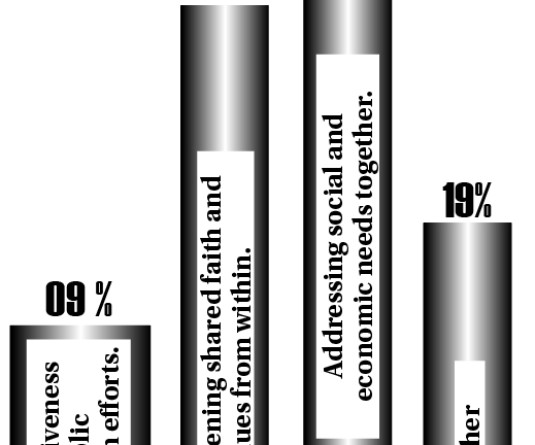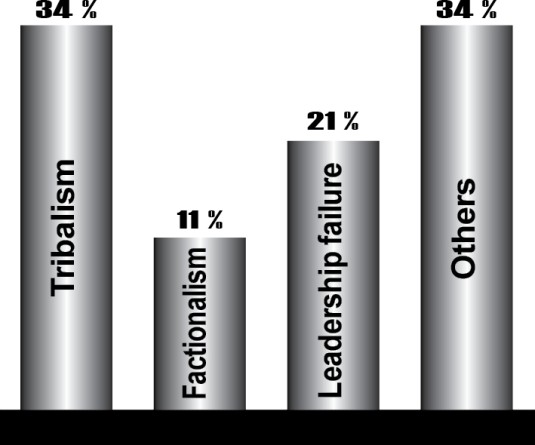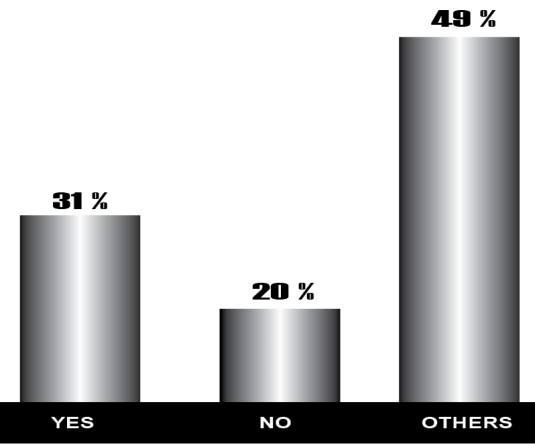
• My perspective on addressing HIV & AIDS with special focus on rural areas (I am a registered nurse, graduated few years back and I come from remote place of Longleng)
1. Education and Training for Frontline Workers: Provide proper education and training about HIV/AIDS to Anganwadi workers, helpers, and ASHA workers. These frontline workers can play a crucial role in spreading early awareness among young children, adolescents, and pregnant mothers, as Anganwadicentres serve as primary contact points for health and nutrition services in villages.
2. Normalize and Improve Access to Protection: Normalize the use of protection such as condoms, and ensure easy accessibility by distributing them free of cost at sub-centres, Primary Health Centres (PHCs), Community Health Centres (CHCs), and all other public institutions.
3. Improve Diagnostic Facilities: Ensure that every public healthcare facility has a functional and well-equipped diagnostic laboratory for HIV testing. Tests should be made available at all times, based on client needs and demands, without delays.
4. Involve Community Institutions: In rural areas, churches serve as central places for daily gatherings and announcements. Therefore, churches, village councils, and student bodies should collaborate with healthcare professionals to organize regular health talks and awareness programs.
5. Use Local Media for Public Awareness: Leverage local YouTuber, especially those creating content in Nagamese, and local radio channels to spread awareness about HIV & AIDS. These platforms are widely used and trusted sources of information in rural areas.
6. Reduce Social Stigma: Intensify efforts to reduce social stigma and discrimination against people living with HIV. This can be done through community education, inclusive policies, and public advocacy.
7. Promote Institutional Deliveries: Encourage compulsory institutional deliveries by offering increased financial incentives. This ensures that couples are tested for HIV, and timely initiation of Antiretroviral Therapy (ART) can be done, if needed.
8. Encourage Early and Routine Antenatal Care (ANC): Promote early and routine ANC check-ups. HIV testing should be done during the first ANC visit for both partners to ensure early detection and protect the unborn child through appropriate interventions.
• Awareness is an old talk, we Nagas should discover a medicine and not depend on the western to develop the medicine.
• Churches can help teach love, care, and awareness about HIV. They are trusted and can fight stigma; many cases come from injecting drugs. Provide clean needles, rehab, and safe treatments; use tribal councils and women’s groups to spread correct information and stop discrimination; break the silence. Teach youth and families about HIV in a safe and respectful way; use mobile vans and local health workers to provide testing and medicines in far-off villages; Teach women and girls about HIV and test pregnant women to protect babies; People living with HIV can inspire others and reduce fear by sharing their journey; use music, sports, and social media to spread awareness and let young people lead the way.
• Education campaign, community involvement, and addressing challenges such has stigma reduction, condom promotion.
• I would recommend working with hospitals that already have programme addressing HIV stigma. CIHSR has one as well as community programming and multiple partnerships.
• Sentinel surveillance, inter-sectoral coordination, and easy accessibility of contraceptives.
• The best method is prevention for which we need to do more awareness programme about the issue on how it spread and about preventive measures as well as try to educate the people more openly. We also need to do more awareness programmes at Schools and colleges and in community level visiting different colony in towns and in village level as well. The focus should also be given more to young people.
• To be honest 95% of HIV &AIDS is mostly contact with sexual activities and this will never stop unless we used preventive measures and helmets. High literacy rate but zero knowledge.
• The increasing number of HIV & AIDS cases in Nagaland, particularly among the youth, calls for urgent, multi-dimensional action. The following measures can be adopted across various sectors:
1. Educational Institutions (schools, colleges, and universities)
What They Can Do:
Curriculum Integration:Introduce subjects or papers on HIV & AIDS awareness in academic syllabi to promote informed understanding & awareness.
Workshops and Seminars: Organize open sessions on HIV & AIDS followed by confidential one-on-one Q&A sessions. This will allow students to ask sensitive questions without fear or embarrassment.
2. Community Engagement and Services
Grassroots Awareness: Utilize the network of Village Health Committees/Chairman (VHCs) and ASHAs across districts and villages to organize awareness programs. These should be conducted in collaboration with local student unions and youth bodies for better participation.
Mandatory Testing for Pregnant Women: To ensure universal HIV testing for all pregnant women to prevent mother to child transmission. Women refusing tests should be temporarily exempted from government maternity benefits to encourage compliance and safeguard newborns.
Flyers and Information:Mandatory pasting of flyers, stickers or banner about HIV & AIDS transmission, guidance, services etc. in government and private offices for more understanding and practices.
3. Access to Free Services
Condom Availability: Ensure the free and adequate distribution of condoms not only in hospitals and clinics but also in public spaces such as rest houses, public toilets, village community buildings with proper care.
Testing Facilities: Provide free and accessible HIV testing in all rural health centers to promote early detection and timely treatment.
4. Addressing Sexual Behavior and Pornography Influence
Sex Education in a Cultural Context: Promote open discussions on sex, sexual health, and the importance of abstinence before marriage, in line with Christian principles prevalent in Nagaland.
Curbing Harmful pornographic Influence:Recognize the influence of pornographic content, which often encourages the youths for imitation of risky sexual behavior such as oral sex and other unsafe practices, contributing to rising cases of STDs and STIs. Awareness programs should address these realities and promote healthier behavior.
5. Role of the Church
With over 99% of Nagaland’s population identified as Christians, the Church plays a crucial role in shaping values and behaviors. Church based programs can bridge spiritual guidance and scientific understanding such as:
HIV &AIDS Sunday Programs: Organize special services where topics are divided and led by appropriate speakers:
Biblical Guidance on Abstinence: To be delivered by Pastors and Reverends, emphasizing the importance of abstinence before marriage.
Medical Education: Health professionals can explain the modes of HIV transmission, prevention strategies, and the importance of breaking the stigma around the disease.
Conclusion: Over 97% of HIV transmissions in Nagaland are linked to unsafe sexual practices among youth. Therefore, education, awareness, access to services and cultural guidance are essential pillars to reverse this trend. Addressing HIV &AIDS is not just a health issues, it's a collective responsibility of educational institutions, local NGOs, local and urban communities, government and the church.
• Nagaland along with Mizoram and other states have some of the highest AIDS cases in the country, some vital steps which need strengthening are:
1. Awareness: Everyone has heard about AIDS but majority of the people are still unaware of how the virus works, how normal contact and care does not spread etc.
2. Stigma and stereotypes: Not all AIDS are STD, some are through birth.
3. Lack of empathy especially by society in general, church, civil societies etc. People are more concern about high cases and not the person affected.
4. Financial constrain to buy doses and proper medical treatment, this goes hand in hand with drug abuse and shortage of medicine to treat the patient.
5. Role of NGO: Shortage of funding and fear to approach the NGO because of stigma. This also needs to be addressed by state government pushing for CSR to fund NGO working in AIDS care.
6. Lack of committed policy by state. State generally takes a copy-paste approach when it comes to AIDS, this one size fit all attitudes should change and bring in state specific models.
7. Availability of contraceptives for free in healthcare center like “No shopkeeper practice” seen in rural Nagaland, to combat shyness.
It is a complex issue where society as a whole need to move in tendem to ensure dignity and care for AIDS patient and to prevent the spread and amplification of cases.
• Majority of HIV &AIDS cases in the state are transmitted sexually, a progressive outlook on such discussions is pivotal for any real improvement in our society instead of sticking strictly to cultural norms and religious beliefs which leads to lack of open discussions about sex and sexuality, hindering any HIV &AIDS prevention efforts. Spreading awareness on the causes and preventive measures to be adopted for HIV &AIDS is crucial, government officials giving such speeches on appropriate days and occasions is well and good, however easing rigid cultural/religious beliefs and practicing open discourse on such matters,without shying away, in all circles of people is ideal for spreading true awareness in all sections of society. In addition, socio-economic status and education of a society are also key determinants of HIV &AIDS prevalence, and adequate measures should be adopted for tackling them. Naga society, with it 79.55% literacy rate, along with the rest of the world needs to adopt a more open-minded approach in dealing with issues which were once considered taboos of discussion. Acknowledging a problem, discussing it, and putting in place measures to tackle the problem or reduce it impacts is a more practical and effective method then simply waving off an entire act as immoral or vile, and shunning him/her while contributing nothing in solving the problems plaguing our society.






